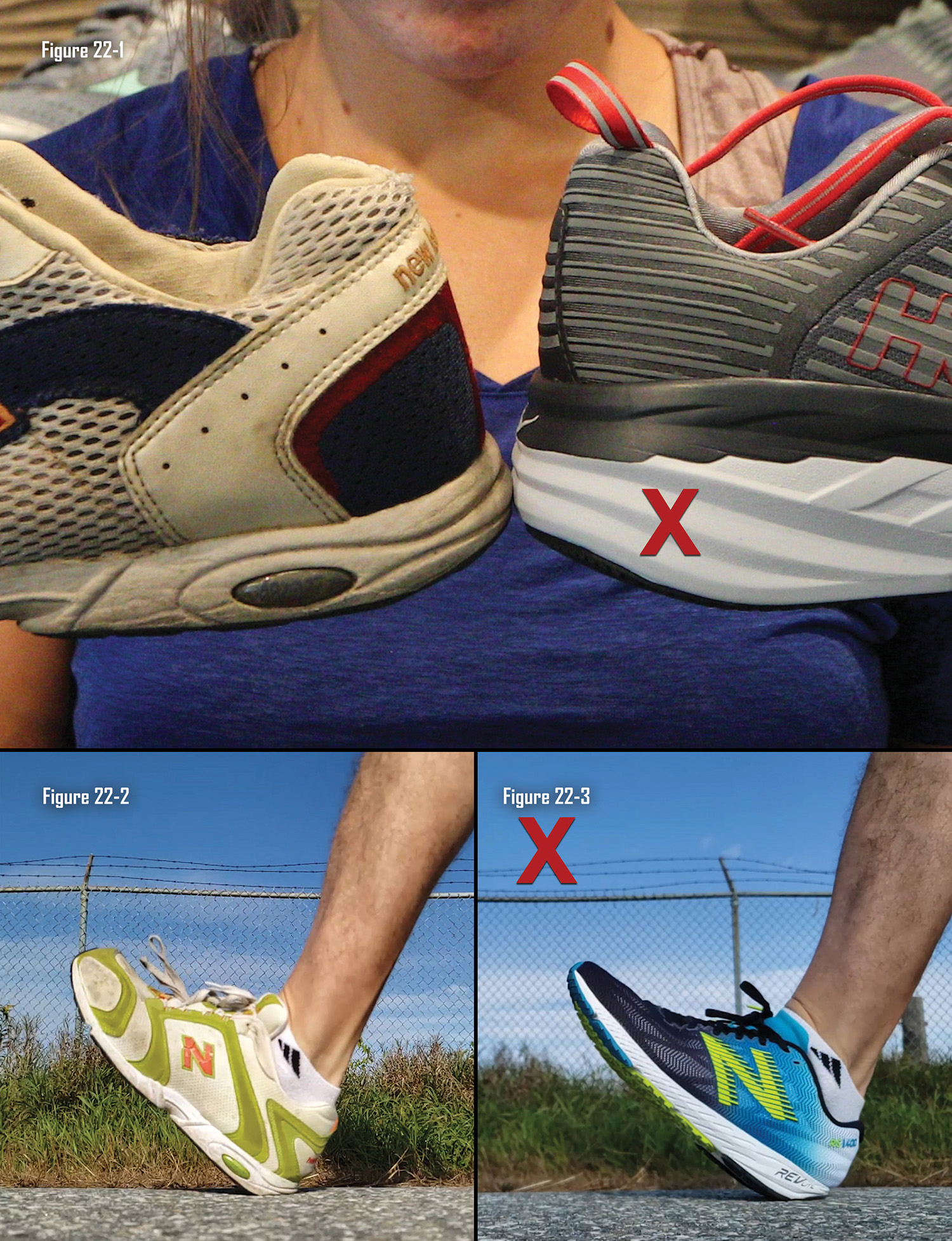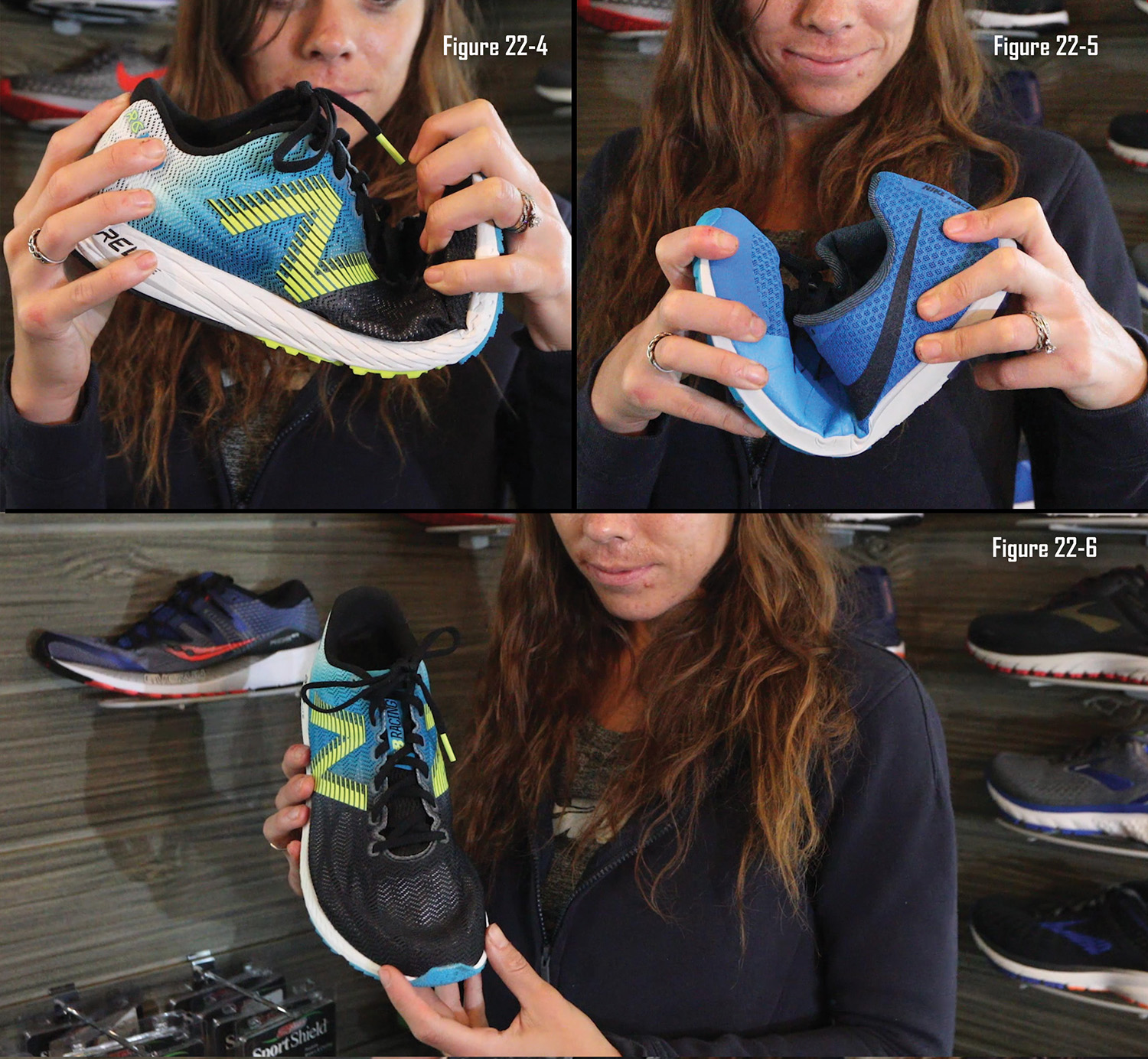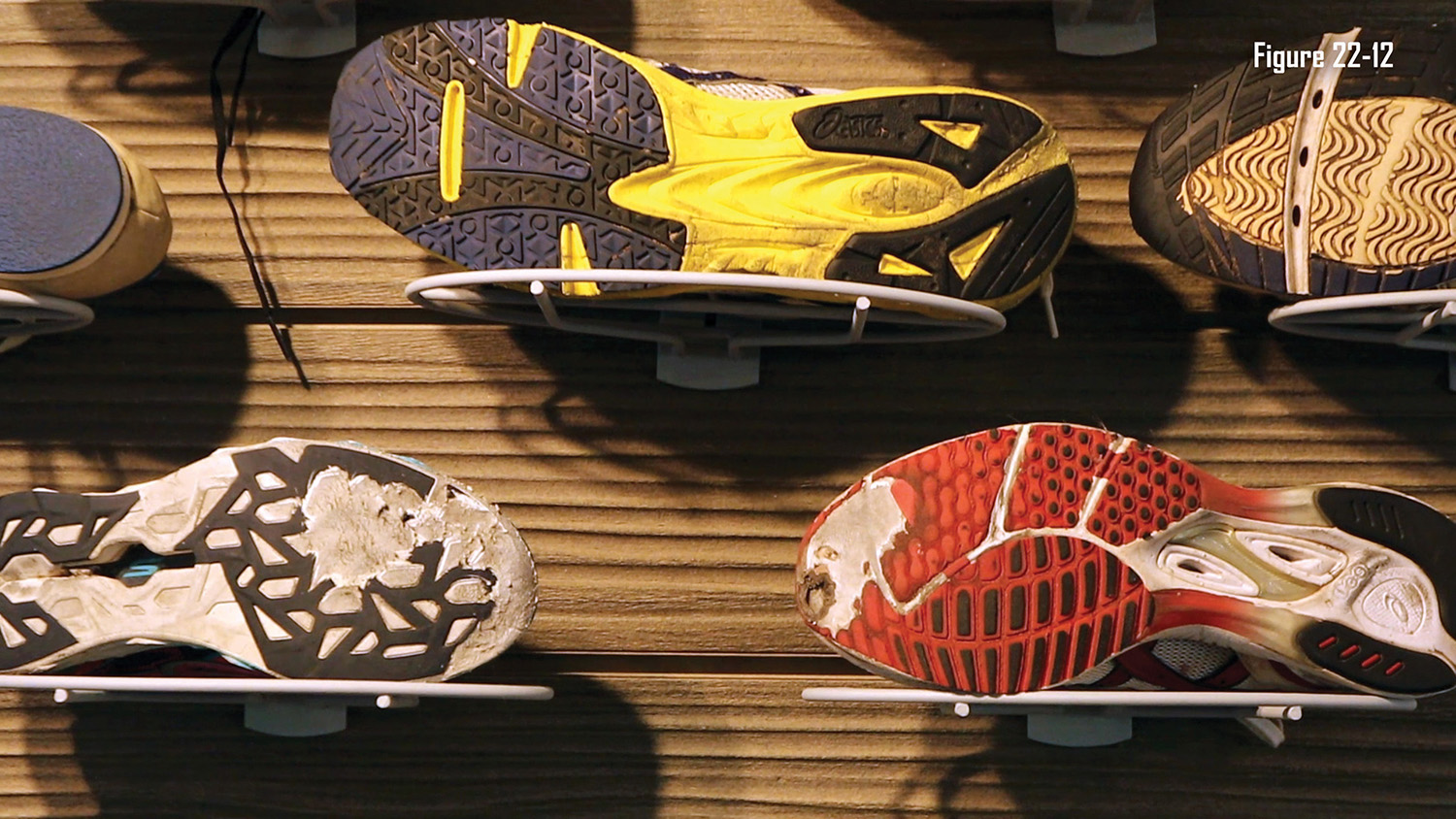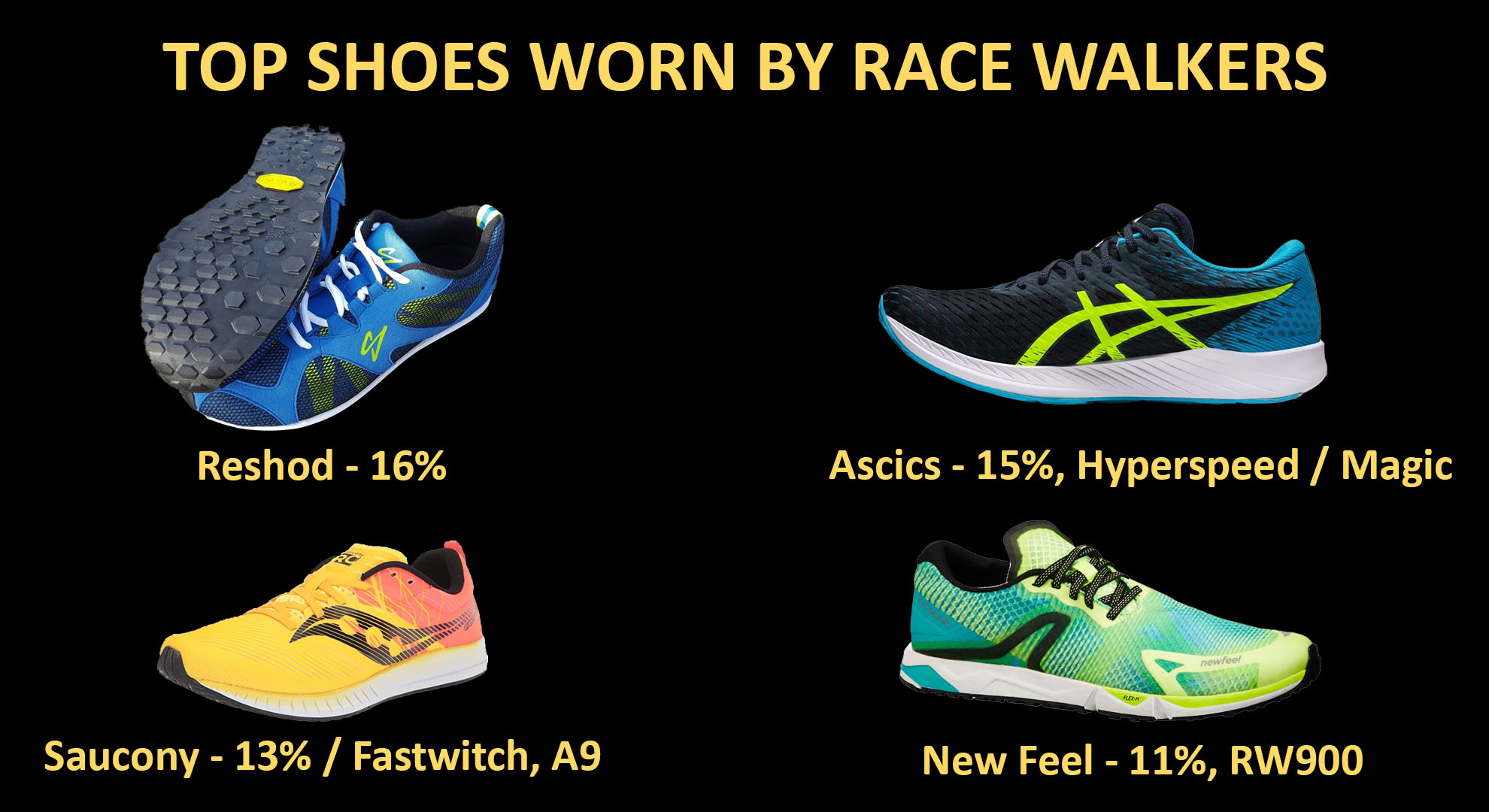Proper Race Walking Shoes
Race walking has a blessing and a curse in that the only equipment you need is a good pair of shoes that fit well. The problem is, at any given time there are few, if any, athletic shoes specifically designed for race walkers.
Look at a walker’s closet and you’ll find a littered mess of shoes. Some are severely worn out and hung onto because their beloved model was discontinued. While others are in pristine condition, because they just weren’t right for race walking. The search for the perfect shoe is an ongoing challenge for race walkers. The answer is simple in theory, but difficult to implement.
Most race walkers resort to finding a pair of running shoes, usually long distance racing flats, that have the following characteristics.
A Low Heel
Race walkers strike the ground with significantly less impact and therefore do not need the level of cushioning found in most traditional running shoes. Observe the difference between the heels of a shoe specifically designed for race walking with a support-focused running shoe (Figure 22-1).
However, care must be taken when selecting a shoe with a low heel. If the heel is too cushiony, it might collapse under heel strike as shown with the shoes in Figure 22-3. Even the shoe in Figure 22-2 compresses more than desirable, although it is not as bad as the shoe in Figure 22-3.

Proper Flex in the Sole
The sole of the shoe should flex in the right places, but not the wrong places. Flexibility under the ball of the foot (Figure 22-4) is desirable to facilitate a stronger push off behind the body. A lack of rigidity under the arch of the shoe is bad. It leads to the shoe collapsing under the middle of the weight-bearing foot (Figure 22-5), causing the hamstring muscle to elongate in a manner that leads to injuries.
Ample Toe Box
The toe box must have enough room for the foot to spread out comfortably (Figure 22-6). This reduces the chances of injuries like black toe nails. It also facilitates a more substantial push off.

Sturdy Heel Counter
A sturdy heel counter or heel cup is desirable but may be the hardest characteristic to find in a running shoe. With more support in the heel, a race walker gets more rigidity where they need it at heel strike (Figure 22-7).
Be wary of shoes where the heel simply collapses under pressure (Figure 22-8).

The Proper Last
When a walker’s foot strikes the ground, it lands on the outer corner of the heel (Figure 22-9). As the stride progresses, the foot rolls towards the big toe. The degree that the foot rolls inward indicates the degree of pronation in a walker’s stride.
Walkers with an overly inward pronation require a straight-lasted shoe.
Walkers without enough inward pronation, those who supinate or under-pronate, require a curve-lasted shoe.
If you are fortunate enough to pronate normally, then select a semi-curved last.
However, selecting a shoe with the proper last (Figure 22-10) can be difficult. It’s best to ask a professional for help.
Additionally, the rear of the shoe needs to provide enough room for your Achilles tendon and thus it should have a notch in the back as shown (Figure 22-11).

Where to Buy
So how can you decide on what shoe is right? We recommend going to store that:
- specializes in running shoes
- are operated by athletically-minded individuals
- who can watch how your walk / run and determine the best shoes for you.
You should know that all running stores won’t be familiar with the needs of a race walker, but if you bring them this list of characteristics, they can match your specific needs with these features, fit you properly and ensure you have the best selection available.
Replacing Shoes
A final note, don’t wear your shoes too long. Everyone is different. Observe shoes from Olympians Tim Seaman and Miranda Melville (Figure 22-12). Both are excessively worn. When shoes have holes and worn out tread, it’s clear that they should be replaced. However, shoes may need to be replaced sooner, if the shoe warps to one side or is unevenly compressed it’s time for them to go. Remember, the cost of new shoes is trivial in comparison to the cost of an injury.

Shoe Survey
The results of our first shoe survey are in. As suspected, there is no single shoe or brand that stands out as an industry leader across the board. That said there were four brands that topped our list.
Reshod lead the pack at 16% of respondents followed by Asciis, Saucony and New Feel at 15%, 13%, and 11%.

Other brands included Adidas, New Balance Brooks and Altra.
One time favorite Mizuno trailed with only 6%.
The constituency of the respondents were broken into four categories where they self described their race walking experience level. Beginners were the smallest group at 11%, Intermediate walkers were at 32%, Advanced walkers who compete at national level events were 40% and the remaining 18% classified themselves as experts with international experience.
It should be noted, that while the first three categories of walkers favored Reshods, and reshods are a brand I personally recommend to beginners, only one expert stated they wear Reshods.

2023 - Shoe Discussion
We hosted a 90 minute talk about the state of race walking shoes in 2023
Reshod Walking Shoes
Everyone's favorite question at this point is what are the best shoes for race walking? It's hard to make a single recommendation for everyone, but the best place to start is with the race walking specific shoes designed by Coach Carmen Jackinsky. They are Reshod Walking Shoes. Not only can you get great shoes, but you can also get great advice. We've heard from countless race walkers how they ordered shoes from Reshod and got amazing, customized service. Check them out at www.reshod.com

A Great Spreadsheet - With All Sorts of Race Walking Shoe Information
